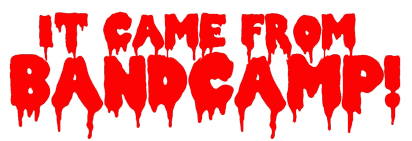Original music has been composed for video games, films, TV shows, slot machines, and even Dungeons and Dragons campaigns. So why not for trading card games? That’s exactly what Japanese video game industry veteran Hiroki Kikuta did when he wrote Vacuum Tube Girls Symphony. The aforementioned vacuum tube girls are the heroines of a game called Shinukan, a Kickstarter-backed project that billed itself as “The Kawaii Steampunk Android Trading Card Game” and sought to bring a Japanese fanservice sensibility to a milieu dominated by straitlaced games like Magic the Gathering. The game was able to make its $20,000 goal in August 2014 and shipped in June 2015 (Kickstarter projects being rather infamous for their slipping deadlines).
Whether Kikuta was attracted to Shinukan as a commissioned artist, as a backer, or simply as an enthusiastic fan, his Vacuum Tube Girls Symphony accompanied its release as a digital download on the Bandcamp indie music platform. After a long drought in the 2000s, the 2010s had seen the composer back in the saddle with numerous projects, from full-fledged video game soundtracks to guest tracks and arrangements to solo endeavors. Seemingly comfortable in his role as a video game music elder statesman, Kikuta began experimenting with more longform compositions that seemed influenced by the cellular and minimalist structure of musicians like Philip Glass, Michael Nyman, and Stephen Reich. Indeed, Kikuta’s the two most recent solo albums, Pulse Pico Pulse and Integral Polyphony, had been lengthy experiments in that regard, with the latter expressly dedicated to Reich. Those albums, fascinating meldings of the worlds of minimalist concert music and VGM, often strayed rather far afield from the sound that had endeared Kikuta to a generation of gamers.
The Vacuum Tube Girls Symphony represents an even more fascinating attempt to combine Kikuta’s quirky signature style with Reich-style minimalism. Like Secret of Mana +, Kikuta’s legendary experimental arrangement album based on his first video game score, Vacuum Tube Girls Symphony is arranged into a single, 42-minute track that cycles through several distinct movements. From 0:00-4:00, the music takes the form of a string and solo piano duet strained through heavy analog noise to mimic the sound of an ancient 78-RPM vinyl recording, presumably as a nod to the retro-futurism design aesthetic Shinukan embraces and mixes with its fanservice. At 4:00, a full-quality militaristic motif in Kikuta’s signature style emerges, punctuated with the sound of breaking glass as a percussion instrument among the drums and marimbas (an experiment the composer also used in Secret of Mana 2). This builds up to, at around the 7:00 mark, the full blossoming of the album’s primary theme, a glorious brassy statement backed up by a blazing orchestra hits and a full silverware drawer’s worth of unorthodox percussion. Beginning around 13:00, the music switches to a different and much more low-key melody, carried on woodwinds with pizzicato strings and pianos, and very much in the style of the composer’s post-Koudelka works. A percussion phase similar to the first one but stripped of many of the odder instruments comes in at 13:00, particularly similar in its doubled pizzicato and normal strings to Kikuta’s efforts for the Shining series beginning in 2011.
A gentle woodwind melody is cut in with the Shining percussion at 18:00, segueing to a return of the gentler style, this time with a more pronounced and quite lovely theme and veering, at times, into the mysterious and sinister–again, very much in the style of the adult games Kikuta scored between Koudelka and Shining Hearts. The percussion returns by 23:00, serving to add a militaristic edge to the continuing woodwinds before eventually bringing back the Shining Hearts doubled strings for an extended outing. By 28:00, a reprise of the low-key melody from 13:00 has subsumed the percussion and serves as an introduction to the return of the brassy primary theme and its glass-shattering backing at 30:00. Kikuta gives the theme a workout, continuing it to the 38:00 mark, where the scratchy 78 RPM music returns to close out the remaining four minutes.
The use of cellular rhythms, repeated with minor variations, is prevalent at each stage of the work, giving it at times the minimalistic feel that characterizes Glass, Nyman, and Reich, and was the overwhelming style present in Pulse Pico Pulse and Integral Polyphony. But the melodies, the use of percussion, and the employment of doubled strings and pizzicato plucking, is classic Kikuta, referencing works from Secret of Mana 2 to Shining Hearts and all points in between. There’s no denying the minimalism, but there’s also no denying the indelible fingerprints of the composer’s unique style. The only part that seems out of character is the lengthy into and outro, where the simple music is mangled by vinyl filters–truly one of the more tiresome musical devices in use today. Along the same lines, Vacuum Tube Girls Symphony‘s gigantic length does allow for remarkably fluid transitions between the various parts of such a diverse work, but it can be a bit of a bother hunting and pecking for a favorite section (a problem it shares with Secret of Mana +).
Still, the Vacuum Tube Girls Symphony represents perhaps the best merging of Kikuta’s unique rhythmic and melodic sense with his interest in minimalist experimentation to come along thus far. Whether you put it on in the background while playing a game of Shinukan or simply listen to it on its own, it’s a fascinating work. As of this writing, the full 42-minute album is available at Kikuta’s Bandcamp page for $10; his fans and those interested in the techniques with which he experiments will both appreciate what the work has to offer.







